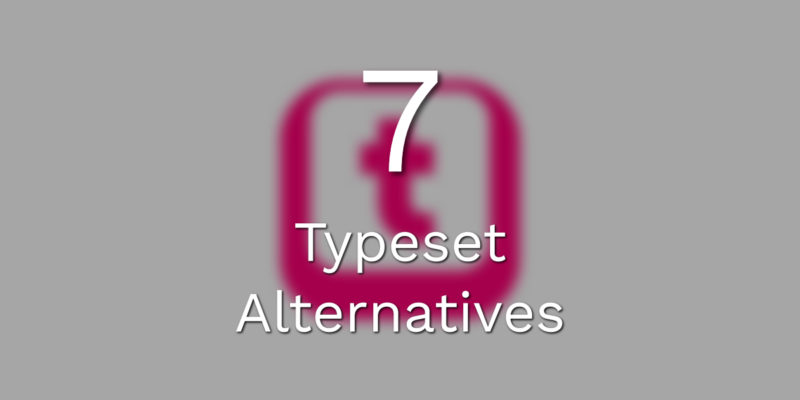So you’re looking for something better than Typeset.com? I get it.
Look, Typeset.com does its job as an AI-powered ebook and content creation tool. But here’s the thing – the design software space has gotten crowded with options that might work better for what you actually need.
Think about it like this. You wouldn’t use the same tool for every project, right? Maybe Typeset.com handles your ebooks fine, but what if you need something with better collaboration? Or cheaper pricing? Or just different features altogether?
Why Typeset.com Users Start Shopping for Better Solutions
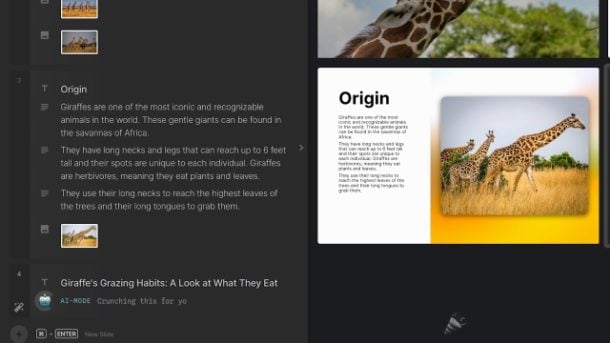
Before we dive into what else is out there, let’s talk about what Typeset.com actually does and why people start shopping around.
What Typeset.com Does and Why People Look Elsewhere
Typeset.com is basically an AI design assistant. You feed it content, and it spits out professional-looking ebooks, presentations, and marketing materials. No design skills required.
But here’s where it gets interesting. People leave for different reasons:
Some find the customization too limited. Sure, AI speeds things up, but what happens when you need something specific? Something the templates can’t handle?
Others hit pricing walls. Maybe you’re paying more than you want. Or the features you need are locked behind higher tiers.
Then there are the feature gaps. Your workflow might need things Typeset.com just doesn’t do well. Better collaboration tools. Different export formats. Integration with tools you already use.
And sometimes? You just want a different experience. Different interface. Different approach to getting things done.
AI-Powered Design Tools That Beat Traditional Software at Their Own Game
The AI design space has exploded lately. We’re not just talking about slight improvements – some of these tools do things Typeset.com can’t touch.
Designrr.io Takes Your Existing Content and Transforms It Into Professional Documents
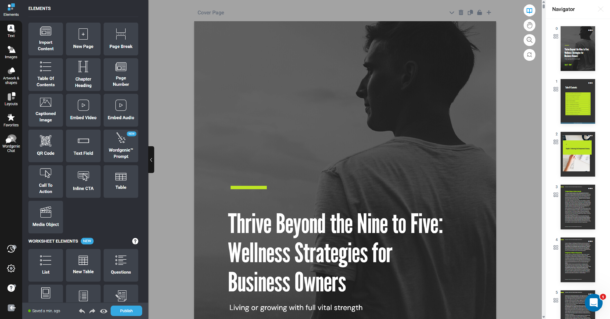
Here’s what I like about Designrr.io.
It doesn’t start from scratch. Got a blog post? Podcast transcript? Video content? Designrr.io grabs that and turns it into a professional ebook. Fast.
What makes it work:
- Content transformation happens in minutes
- You get PDF, Kindle, ePub, and flipbook formats
- WordGenie AI helps with the writing parts
- Over 300 templates to pick from
Why it might beat Typeset.com for you: Simple. If you’re already creating content somewhere else, why start over? Designrr.io’s ebook creator maximizes what you’ve already got. Plus the transcription services mean you can turn audio into written content without extra work.
The pricing varies, but we run promotional deals pretty regularly.
See how easy it is to create lead magnets with Designrr
Sign up for Designrr’s special offer today!
Gamma Builds Interactive Presentations That Actually Engage Your Audience
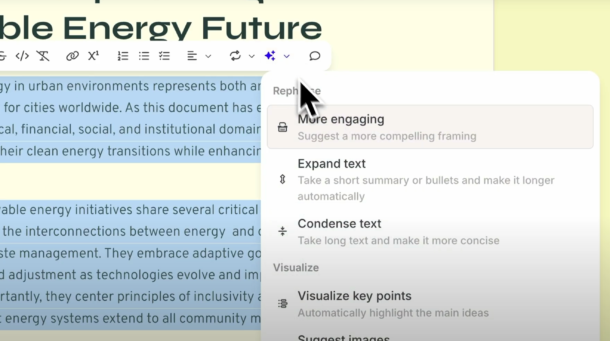
Gamma caught my attention because it doesn’t just make slides. It makes presentations people actually want to look at.
You give it a prompt. It builds the whole presentation. But here’s the cool part – these aren’t static slides. They’re interactive.
What you get:
- AI generates content from simple prompts
- Polls, embedded content, multimedia that actually works
- Everything looks good on phones and tablets automatically
- Analytics show you who’s paying attention
Perfect for teams that need to impress but don’t have time for fancy design work.
Beautiful.AI Automatically Fixes Your Slide Design While You Work
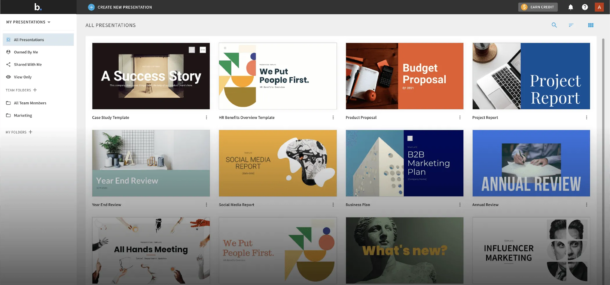
Beautiful.AI has this thing called DesignerBot. Sounds gimmicky, but it actually works.
As you add content, it adjusts the layout. Keeps everything looking consistent. Maintains your brand standards without you thinking about it.
The standout stuff:
- Smart formatting that adapts as you type
- Brand consistency across every slide
- Template suggestions based on your content type
- Real-time collaboration that doesn’t break things
Established Design Platforms That Have Proven Their Worth Over Years
While AI tools are exciting, sometimes you want something proven. These platforms have been refining their approach for years, and it shows.
Canva Dominates the Design Space Because It Actually Solves Real Problems
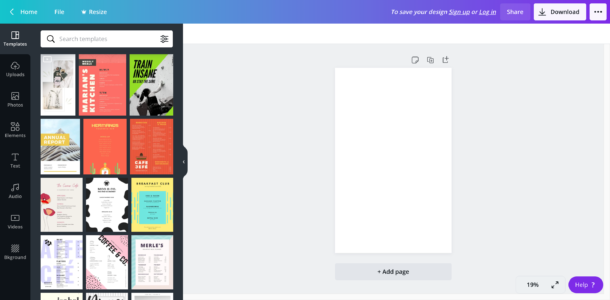
Canva is everywhere for a reason.
220 million people use it, and that number keeps growing. They’ve got AI features now too, but their real strength is the massive library of everything.
Why people stick with Canva:
- Millions of templates and design assets
- AI Studio features that actually save time
- Team collaboration that works like Google Docs
- Direct publishing to social platforms
Pricing that makes sense:
- Free version covers basics (with watermarks)
- Pro runs about $10/month
- Teams start around $8-10 per person
TIME named their AI Studio one of 2024’s best inventions. That’s not nothing.
The question is – do you need all those features, or are you paying for stuff you won’t use?
Adobe InDesign Remains the Gold Standard When You Need Professional Publishing Quality
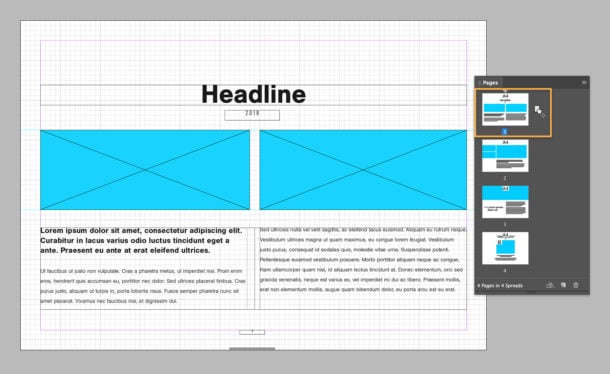
Adobe InDesign costs more. Takes longer to learn. But if you need industry-standard results, it’s still the go-to choice.
What you’re paying for:
- Typography control that other tools can’t match
- Color management for professional printing
- Complex layout capabilities
- Integration with other Adobe tools
At $20.99/month for just InDesign or $54.99/month for everything, it’s not cheap. But if your work demands this level of control, the alternatives often fall short.
Figma Revolutionized Team Design Collaboration and Keeps Getting Better
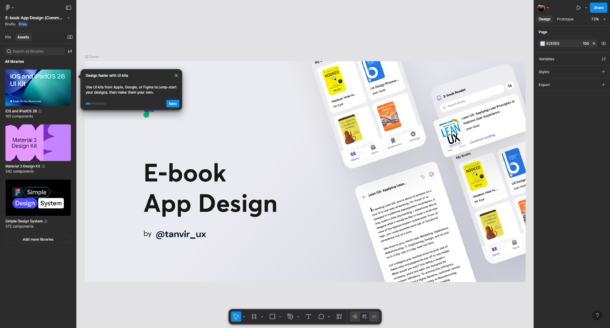
Figma serves millions of users and basically created the collaborative design category.
Why teams love it:
- Multiple people can edit simultaneously
- Works in your browser – no software to install
- Developers can grab specs and assets directly
- Version history that actually makes sense
Pricing starts free for personal use, then $20/month per editor for professional features. Worth noting – they raised prices recently, so factor that in.
Academic and Research Tools That Actually Understand Complex Document Requirements
Academic work has different needs. Citation management. Complex formatting. Collaboration with colleagues across institutions. General design tools often miss these requirements entirely.
Overleaf Makes LaTeX Document Creation Actually Manageable for Researchers
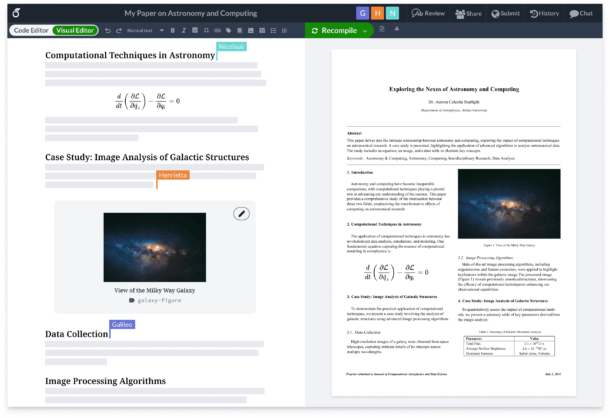
Academic publishing often means LaTeX. But LaTeX can be brutal to work with.
Overleaf serves over 20 million users across 6,800+ institutions. That’s not an accident.
What makes it work for academics:
- LaTeX editing that doesn’t make you want to quit
- Hundreds of journal templates ready to go
- Multiple people can work on the same document
- University integration and support
Free plans include unlimited collaborators. Premium features run $15+ monthly, but many institutions provide access.
Notion Goes Beyond Simple Documents to Create Complete Research Workspaces
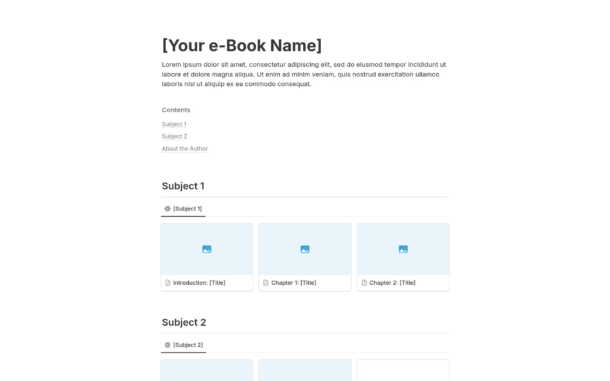
Notion isn’t just a design tool. It’s more like a workspace that happens to handle document creation really well.
Why researchers like it:
- Combine writing, databases, and project management
- Template system for consistent document structure
- AI assistance for writing and content generation
- Team workspaces with proper permission controls
Specialized Writing Tools Built for Authors and Long-Form Content Creators
If you’re working on books, long-form content, or complex research, you need tools built for writing first, design second.
Scrivener Organizes Complex Writing Projects Better Than Any Other Tool
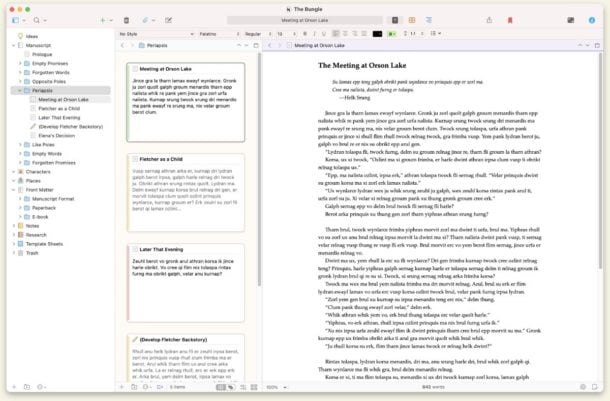
Authors and researchers swear by Scrivener. It’s not pretty, but it gets the job done.
What makes it different:
- Research management built right in
- Flexible document organization and outlining
- Writing targets and progress tracking
- Export to basically any format you need
One-time purchase of $59.99. No subscription trap.
Authorea Bridges the Gap Between Modern Collaboration and Academic Publishing Standards
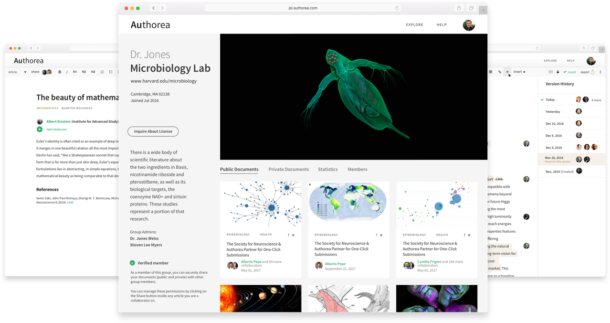
Authorea tries to solve the academic publishing headache. Write visually, export to LaTeX. Link your data and code. Submit directly to journals.
Academic-focused features:
- Visual editing that outputs LaTeX
- Data and code integration
- Direct journal submission
- Git-based version control
Direct Feature Comparison Shows Real Differences Between These Tools
Let me break this down in a way that actually helps you decide.
| Platform | Best For | AI Features | Collaboration | Pricing Model | Learning Curve |
| Typeset.com | AI ebook creation | Strong | Basic | Subscription | Low |
| Designrr.io | Content repurposing | Moderate | Limited | Subscription/Lifetime | Low |
| Canva | General design | Strong | Excellent | Freemium | Low |
| Adobe InDesign | Professional publishing | Limited | Moderate | Subscription | High |
| Figma | UI/UX design | Moderate | Excellent | Freemium | Moderate |
| Overleaf | Academic writing | Limited | Excellent | Freemium | Moderate |
| Gamma | Presentations | Strong | Good | Freemium | Low |
Smart Selection Strategy Based on Your Actual Work Requirements
Here’s the thing – the “best” tool depends entirely on what you’re trying to accomplish. Let me walk through different scenarios.
Content Creators and Marketers Need Versatility Above Everything Else
You’re probably juggling multiple content types. Social media posts, ebooks, presentations, email graphics. Sound familiar?
Go with Canva if you need that versatility. The AI assistance is solid, team features work well, and the template library covers almost everything. Social media integration saves time too.
Pick Designrr.io if you’re already creating blogs, podcasts, or videos and want to repurpose that content into ebooks and documents. Why start from scratch when you can build on what you’ve already made?
Professional Designers Require Precision and Industry-Standard Output
You need control. Precision. Results that meet industry standards.
Choose Adobe InDesign when your work demands professional typography, exact color matching, and complex layouts. Yes, it’s expensive and takes time to learn. But when the output needs to be perfect, alternatives often come up short.
Go with Figma for collaborative projects, especially UI/UX work. The real-time collaboration and developer handoff features are game-changers for product teams.
Academic and Research Users Face Unique Documentation Challenges
Your workflow is different. Citations matter. Collaboration spans institutions. Formatting requirements are strict.
Pick Overleaf for LaTeX-based writing. The institutional support and template library handle most academic publishing needs. Free collaboration features are hard to beat.
Consider Authorea if you want modern collaborative features without giving up academic publishing requirements.
Small Businesses and Startups Must Balance Quality with Speed and Budget
You need results fast. Budget matters. Learning curves should be minimal.
Canva hits the sweet spot for most small businesses. Easy to learn, covers most design needs, reasonably priced. The team features grow with you.
Think about Figma if your team includes both designers and developers. The collaboration benefits often justify the cost and learning investment.
Budget Reality Check Shows True Cost of Design Tool Ownership
Let’s talk money. Real money, not just the monthly subscription number.
Free Options That Actually Deliver Professional Results
- Canva Free: Handles basic design needs. Watermarks, but functional
- Figma Free: Full features for personal use, some file limits
- Overleaf Free: Complete academic writing setup, unlimited collaborators
Mid-Range Tools Offer the Best Value for Most Users ($10-20/month)
- Canva Pro: Best overall value for general design work
- Figma Professional: Excellent for design teams
- Adobe InDesign: Industry standard, but learning curve is real
Premium Solutions Justify Their Cost for Specific Use Cases
- Adobe Creative Cloud: Full professional suite
- Enterprise versions: Custom pricing, but worth it for large teams
Key Takeaway
After looking at all these options, here’s what makes sense for most people.
Canva gives you the best combination of features, ease of use, and reasonable pricing. The learning curve is minimal, and it handles most design needs without making you think too hard about it.
Designrr.io makes perfect sense if you’re already creating content elsewhere and want to repurpose it efficiently. The specialized content transformation features solve a real problem.
Adobe InDesign remains necessary for professional publishing work, despite the cost and complexity. Some things just require that level of control.
The key is being honest about what you actually need versus what sounds cool in a features list. Most platforms let you try before you buy, so take advantage of that.
And remember – the best tool is the one you’ll actually use consistently, not the one with the most impressive feature list.
What kind of projects are you working on? That’ll help narrow down which direction makes the most sense for your specific situation.
Always check current pricing and features directly with vendors – things change fast in this space.
Frequently Asked Questions About Typeset.com Alternatives
Get answers to the most common questions about finding the right design tool for your content creation needs
Is Canva really better than Typeset.com for ebook creation?
Canva offers more versatility and a larger template library, making it better for general design needs. However, Typeset.com specializes in AI-powered ebook creation with automated formatting. If you only create ebooks and want AI assistance, Typeset.com might still work better. For multiple content types, Canva provides better overall value.
Can I migrate my existing Typeset.com projects to other platforms?
Most platforms allow you to import content, but you’ll likely need to recreate templates and formatting. Export your Typeset.com projects as PDF or other standard formats first. Designrr.io works well for content migration since it can transform existing documents. Plan extra time for template recreation and formatting adjustments.
Which alternative is best for teams that need collaboration features?
Figma and Canva offer the best collaboration features. Figma excels for UI/UX teams with real-time editing and developer handoff capabilities. Canva provides Google Docs-style collaboration with easier learning curves for non-designers. For academic teams, Overleaf offers unlimited collaborators even on free plans.
Are free alternatives actually good enough for professional work?
Yes, several free options work well professionally. Canva Free handles basic design needs (with watermarks), Figma Free provides full features for personal use, and Overleaf Free offers complete academic writing capabilities. The limitations are usually file storage, advanced features, or team collaboration rather than output quality.
How much should I expect to spend on design software monthly?
Budget $10-20/month for most professional needs. Canva Pro costs around $10/month, Figma Professional is $20/month per editor, and Adobe InDesign runs $21/month. Teams should budget $8-15 per person monthly. Free tiers often work for individual creators or basic business needs.
Does Adobe InDesign justify its higher cost and learning curve?
For professional publishing, print design, or complex layouts, yes. InDesign offers typography control, color management, and precision that alternatives can’t match. However, most small businesses and content creators find Canva or other alternatives sufficient. Only choose InDesign if your work specifically requires professional publishing standards.
What’s the biggest mistake people make when switching design tools?
Choosing based on features lists rather than actual workflow needs. Many people get excited about advanced capabilities they’ll never use. Test with real projects during free trials, focus on tools that solve your specific problems, and consider team adoption difficulty. The best tool is the one you’ll actually use consistently.
Can I use multiple design tools together effectively?
Absolutely! Many professionals use tool combinations strategically. For example, Designrr.io for ebook creation, Canva for social media graphics, and Figma for app design. The key is choosing tools that export standard formats and don’t create workflow friction. Avoid overlap that creates confusion about which tool to use when.
How long does it typically take to learn a new design platform?
Simple tools like Canva or Designrr.io can be learned in hours to days. Professional tools like Adobe InDesign or Figma may take weeks to months for proficiency. Factor learning time into your decision – sometimes a slightly less powerful but easier tool gets better results because you’ll actually use all its features.
Are there any alternatives specifically designed for content repurposing?
Designrr.io specializes in content repurposing, transforming blogs, podcasts, and videos into ebooks and documents. It includes transcription services and multiple export formats. This makes it ideal if you’re already creating content elsewhere and want to maximize its value through repurposing rather than starting design projects from scratch.
